This flat castle stands where the Asakura River flows into the Toyokawa River and is the centre of the Higashimikawa region.
The castle was once a battleground between the Imagawa and Matsudaira (later Tokugawa) clans.
| Alternate name | Imabashi Castle |
|---|---|
| Castle site | Flat castle |
| Castle structure | Semi-circular |
| Ishigaki (Stone walls) | Nozura zumi, partly uchikomi hagi |
| First castle built | by Makino Kohaku |
| Date of construction of the first castle | c. 1496 |
Sakai Tadatsugu, an important vassal of Tokugawa Ieyasu, was given Yoshida Castle and served as its lord. Sakai Tadatsugu was the first Tokugawa vassal to be given a castle.
After Tokugawa Ieyasu was transferred to the Kanto region, Ikeda Terumasa entered the area as a Daimyo on the Toyotomi side, and the castle was extensively renovated into a modern castle.
It is not widely known, but Yoshida Castle is a rare example of the ideal form of castle fortification, with all the turrets in the main citadel of Yoshida Castle being three-storey turrets, the second citadel having two-storey turrets, and the third citadel having no turrets. It was a large castle with five three-storey turrets.
 Load of this site
Load of this siteThe castle of my hometown.
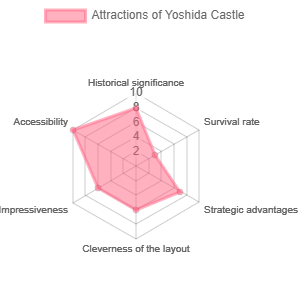

The attractiveness of Yoshida Castle at my discretion and prejudice
- Tokugawa Ieyasu gave the castle to his first vassal (Sakai Tadatsugu).
- Ikeda Terumasa rebuilt it into a modern castle.
- One of the largest areas in Japan
- Easily accessible by tram from Toyohashi Station
This article introduces the highlights of Yoshida Castle.
Layout and highlights of Yoshida Castle
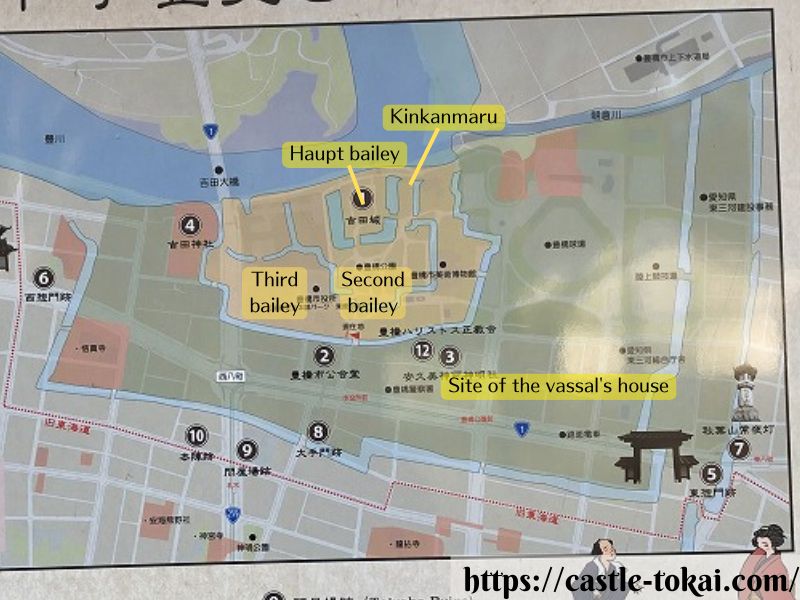

The former castle grounds of Yoshida Castle now house Toyohashi Municipal Toyosyo Junior High School, Toyohashi City Hall and the Toyohashi City Art Museum, and the area is also used as Toyohashi Park, providing a place for citizens to relax.
Yoshida Castle has the following features
- Main citadel on a slight rise on the terrace of the Toyokawa River. Kinkan-maru to the east across an earth bridge.
- Ninomaru to the south of the main circuit and the kumquat circuit.
- Sannomaru surrounds Ninomaru. Sannomaru is bounded by a small moat and earthworks.
- Outside San-no-maru is the site of the retainer’s house, and a full moat surrounds the house site.
If the inside of the moat is considered the castle area, it measures about 1,400 metres from east to west and 700 metres from north to south, making it the second largest castle along the Tokaido Road in the early modern period after Okazaki Castle.
As a former citizen, I don’t really feel it, but in fact it is one of the largest castles in Japan, with one of the largest territories in the country.
The Ishigaki (stone walls) of Yoshida Castle
The ishigaki of Yoshida Castle are only built around the honmaru (main bailey) and the main gates. The ninomaru (second bailey) and sanomaru (third bailey) remain as earthworks.



It seems that although stone was available, there was a shortage of masons to stack it, so only the most important parts of the castle were made into ishigaki.
Not only because of the lack of masons, but also because of the need to improve the land due to the soft soil, the idea of a complete stone wall was abandoned.
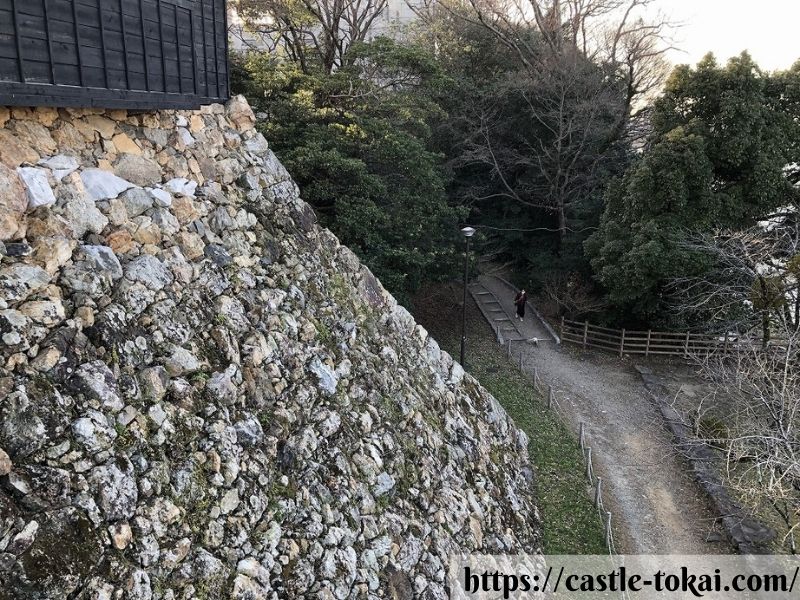

High stone wall under the Kurogane-Yagura (tower) of Yoshida Castle
The stone wall of the kurogane yagura from the Honmaru side does not seem high, but if you go down along the river, you will see that it is a high stone wall.
It is 12 m above the ground and 15 m above the river.
Built during the Ikeda Terumasa period, it is characterised by the use of field piles of locally produced chert, with many of the intervening stones being river stones, and the use of timber piles, which was underdeveloped.
In general, the stone walls could only be built to a height of about 5 metres, but Ikeda Terumasa was able to mobilise “ano shu” to stack the stones, so he was able to build a stone wall over 10 metres high with the ishigaki.
The ishigaki of the kurogane yagura platform were rebuilt when the yagura was rebuilt, so only the lower part remains in its old state from the Ikeda Terumasa era.
Ishigaki covered with concrete
The stone walls were covered with concrete during the Meiji era (1868-1912) to prevent them from collapsing.
You can clearly see that it has turned black and is impregnated because it cannot drain water.
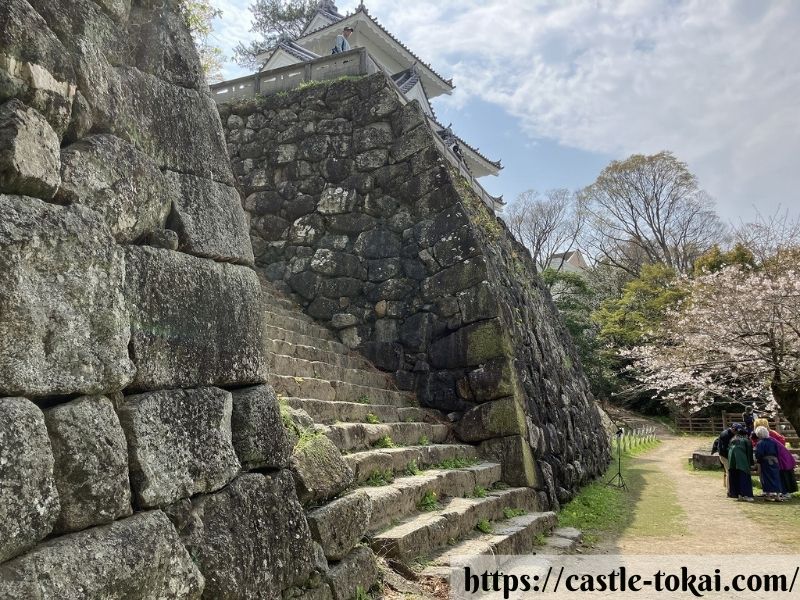




The irony is that the ishigaki were supposed to make them less likely to collapse, but instead they have made them more likely to collapse.
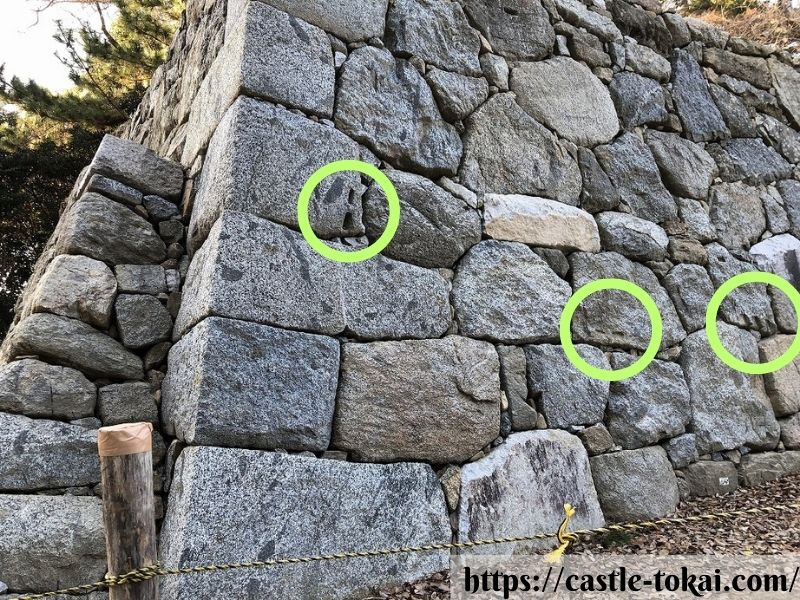

Arrow holes in the ishigaki wall of Minami-gotamon
In modern times, part of the wall was converted into a granite stone wall to make it more majestic. Many of the stones have arrow-hole marks, and it is thought that the stones used were those intended for Nagoya Castle.
This part of the wall is uchikomi hagi.
Wall engraving
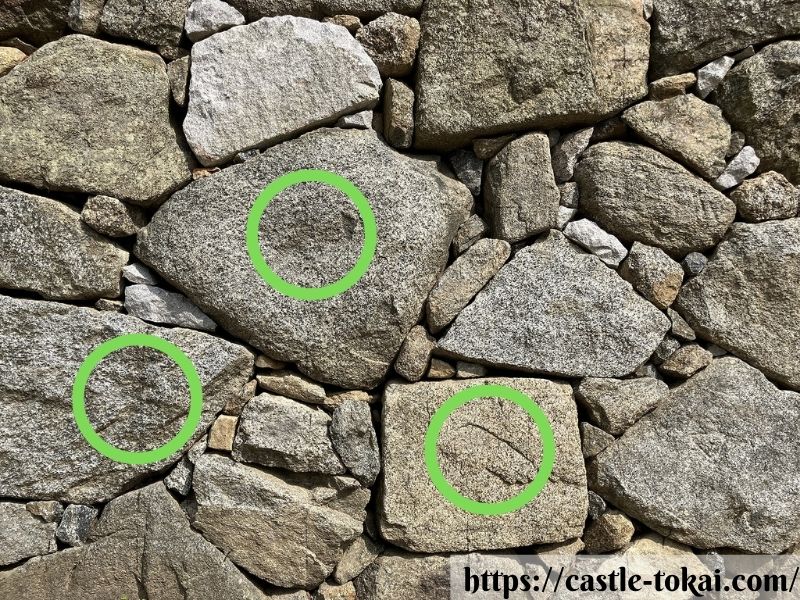

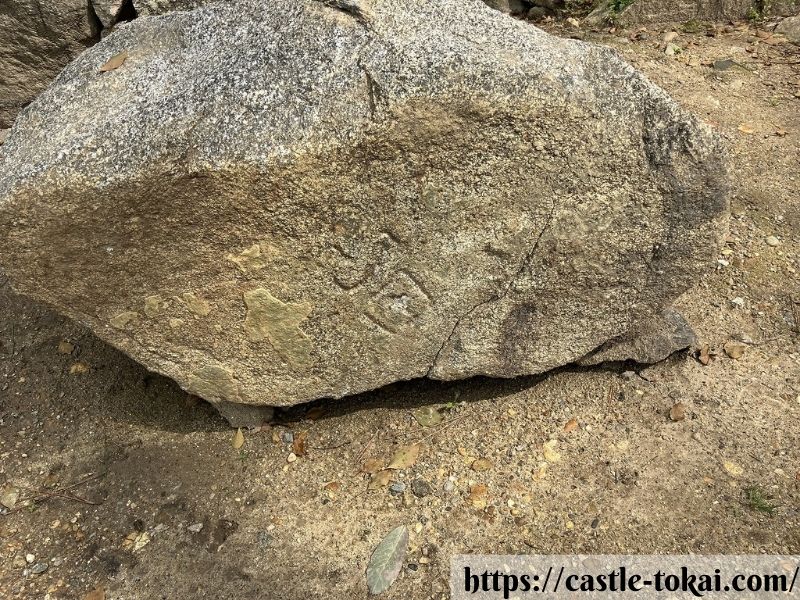

There are many stone carvings on the stone walls around the gate.



The stone walls collapsed during heavy rain, and when they were repaired, they seem to have been subjected to high-pressure washing, making the engravings difficult to see.
The stones called ‘Yamadaishi’ happen to be clearly stamped with ‘Yamada‘, so they are called ‘Yamadaishi‘.
The Yamada stone cannot be put back in place because it has cracked, and a new stone of similar shape has been inlaid in its place. The ‘Yamadaishi’ stamp is clearly visible, so it is placed on display at the Minamitamon.
It has been determined who this Yamada is.
Castle gate
The masugata is said to have had Koraimon and Yakuimon gates on the outside and tower gates on the inside, and all the tower gates are said to have had gabled roofs.



It is unusual that they were all gabled.
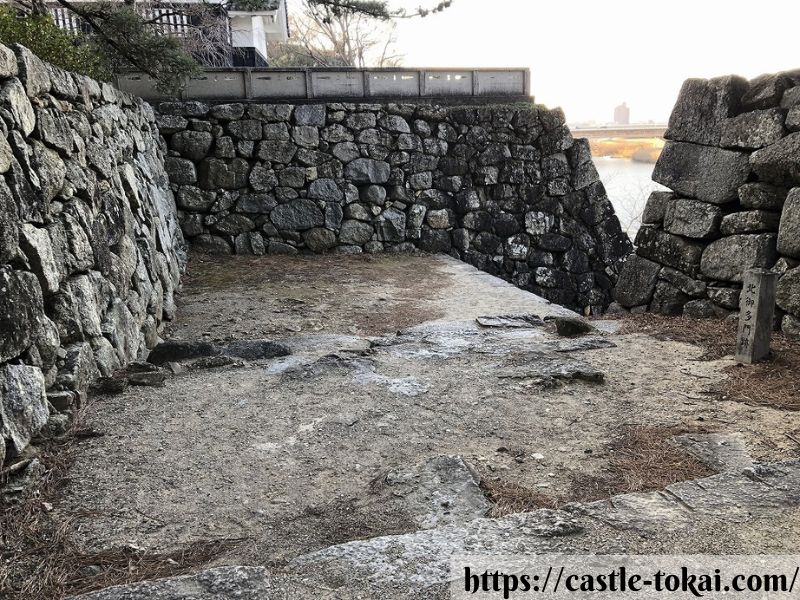

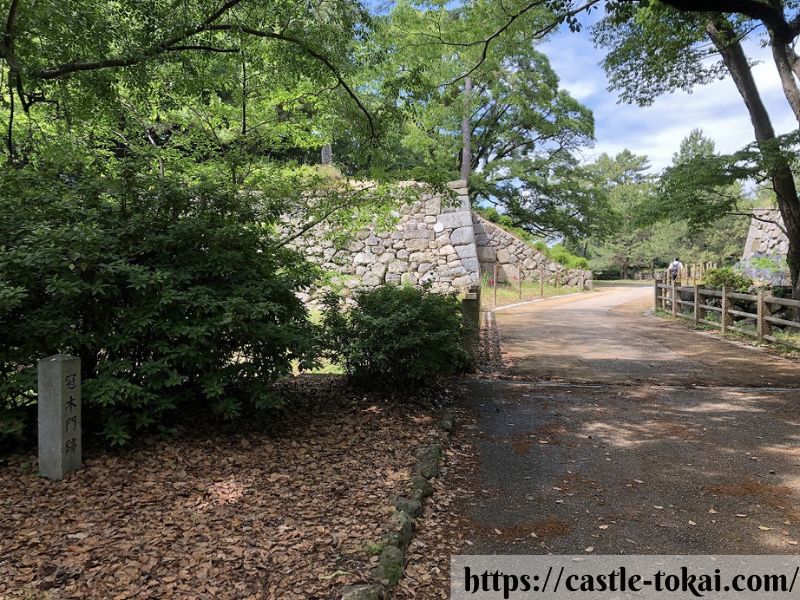

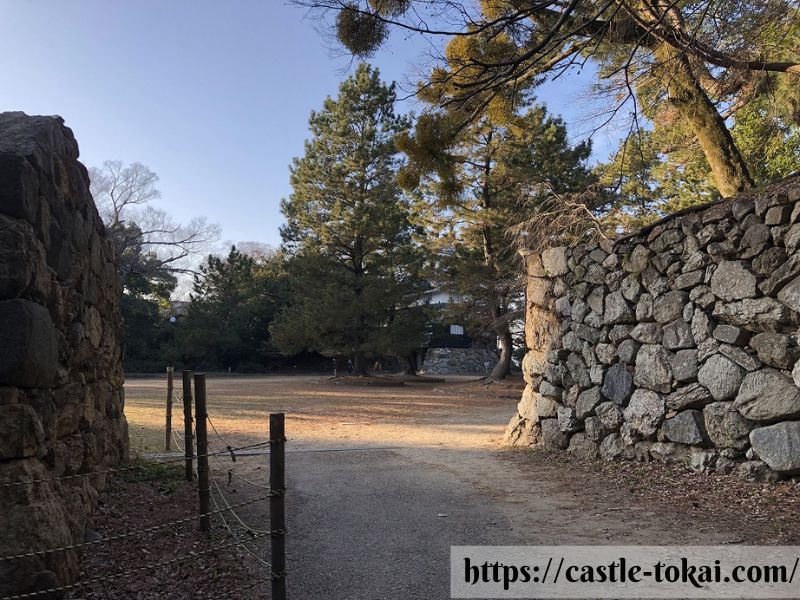

It is unclear whether the Minamitaimon was indeed a kabuki mon (crown gate).
The Uragomon has the shape of an inner masugata.
Mounds, earth bridges and ditches
The earthworks at Yoshida Castle are over 1,000 metres long in the surviving sections alone, and are among the best in the country for a castle in an urban area.



There’s now an arena construction project in the works, and we don’t know what will happen to the earthworks. It’s a nationally valuable earthwork, so I’d like it to be preserved if possible.
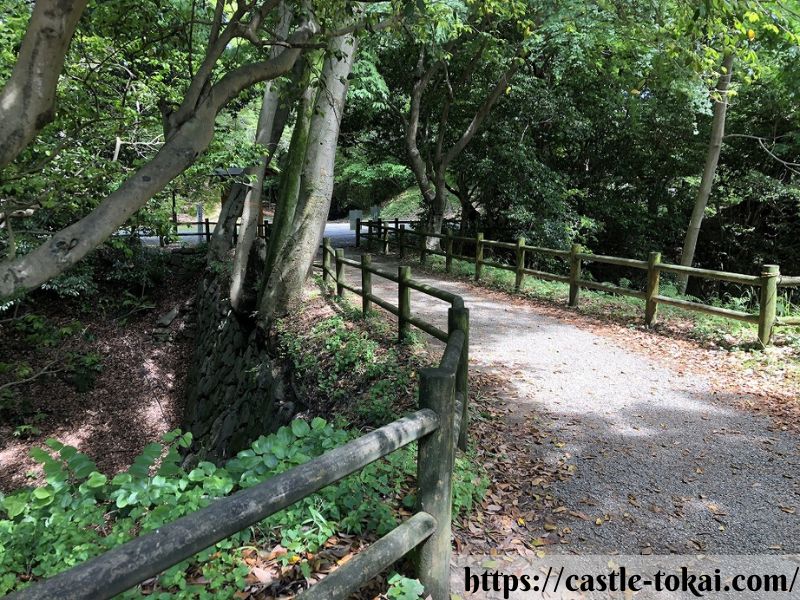

Earth bridge
The earthen bridge on the way out of the back gate to the Konkan Maru. Of course, moats on both sides of the earthen bridge.
Earthen mound
Basically, earthworks and moats are a set, as the earth from which the moat is dug is heaped up to form an earthen mound.
However, except for the moat around the main circle, most of the area has been reclaimed.
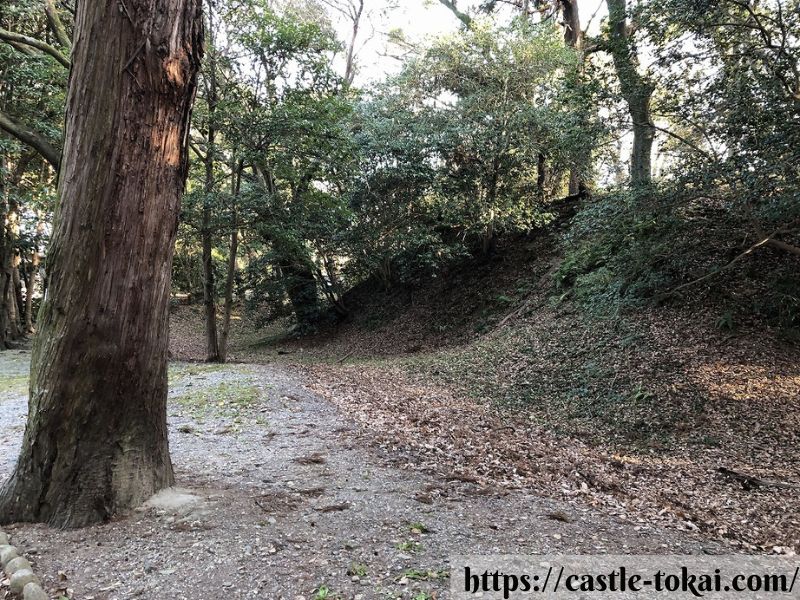




On top of the earthworks, there used to be an earthen wall and a row of foundation stones has been found. This is also rare.
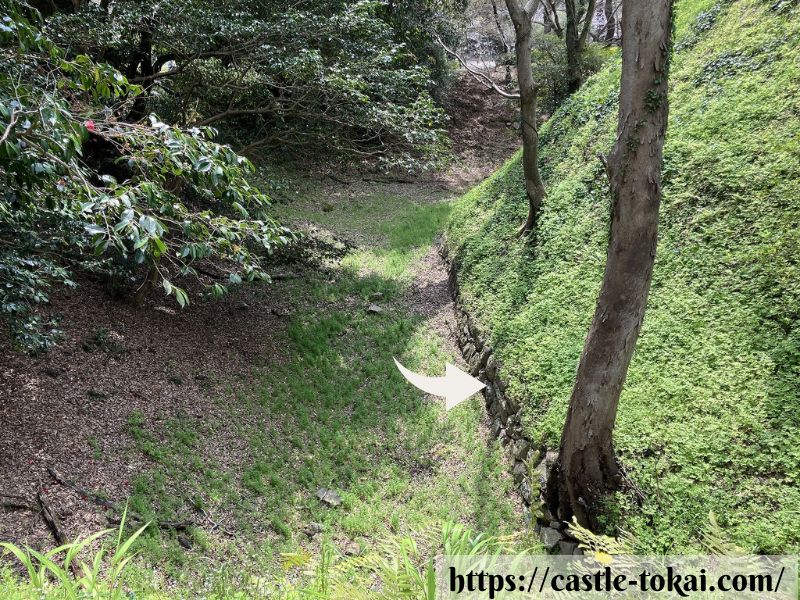

Moat and Koshimaki stone wall
This moat is an empty moat, but after heavy rain it is submerged.
The waist stone wall at the bottom of the moat serves as a retaining wall to prevent the cut bank from collapsing due to rain.
Only a small portion of the stone wall is visible today, and it has largely been buried over the years. Excavations have revealed that the waist stone wall was 2.1m high.
Honmaru (Inner bailey)
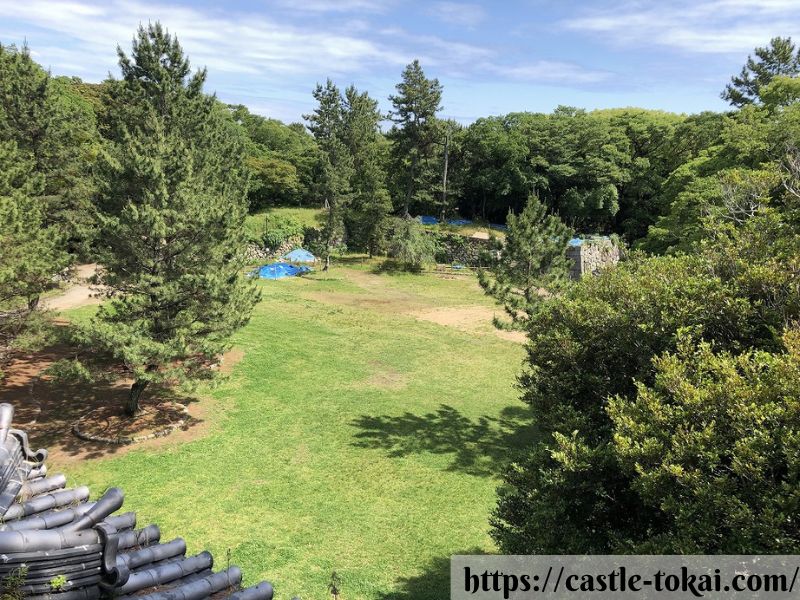

Site of the Honmaru Palace, where the Honmaru goten once stood.
The Honmaru Goten collapsed during the Hoei earthquake and was never rebuilt.
Originally, the Honmaru was a place for the Shogun to stay when he travelled to Kyoto, but as time went on, the Shogun no longer travelled to Kyoto. Therefore, like other castles, the Honmaru was never rebuilt.



Both Kakegawa Castle and Hamamatsu Castle were destroyed in earthquakes, but were not rebuilt for the same reason.
The stone walls surrounding the honmaru are only on the inside, while the outside is adobe.
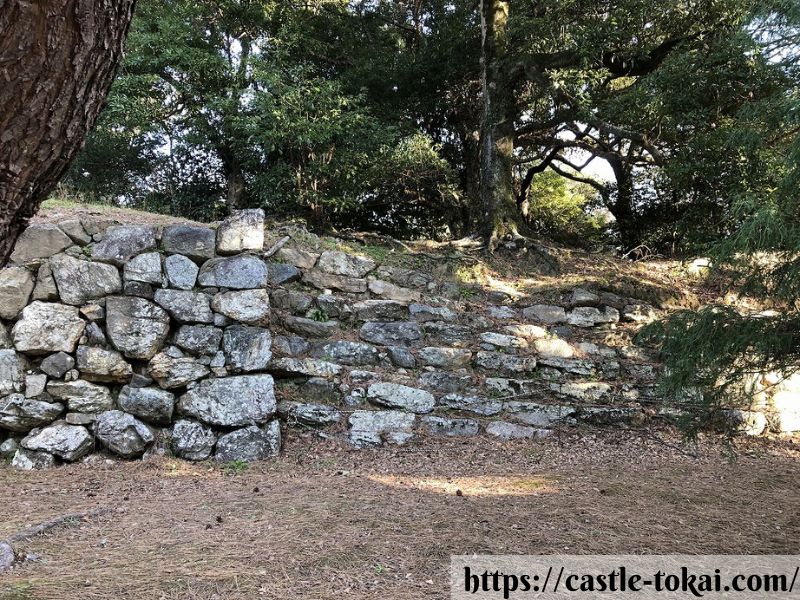

Remaining gangi on the stone walls
The remaining gangi at Yoshida Castle are large. Their layout and dimensions correspond to the former Honmaru Palace.
The steep steps that warriors would run up to take up defensive positions in an emergency, and the ones at Yoshida Castle, are quite wide, allowing a large number of warriors to reach their defensive positions much more quickly.
Kurogane Yagura (Tower)
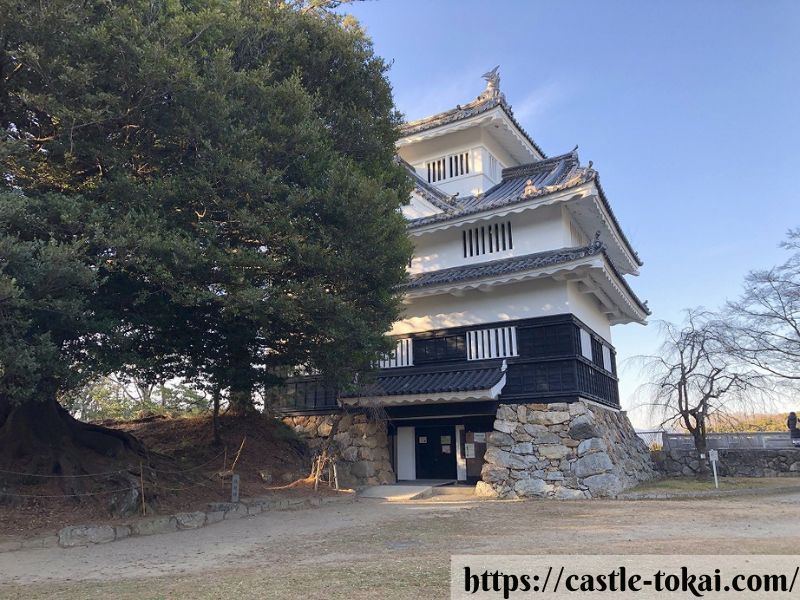

Yoshida Castle does not have a tenshu, but the kurogane tower is a de facto tenshu. It is, in fact, a tenshu, except that it was not reported to the Edo Shogunate as a tenshu.
The three-storey Tower is the largest tower in Yoshida Castle. Unlike the other yaguras, only the kurogane yagura is an independent yagura, which also indicates that it is a yagura in the style of a tenshu.
The Kurogane Tower is,
- A conspicuous site when viewed from the Yoshida Bridge when travelling along the Tokaido from Kyoto to Edo.
- When travelling along the Tokaido from Edo to Kyoto, the Ote-mon Gate and the Kurogane Tower stand side by side.
The kurogane tower is in a prominent position.



The kurogane tower that stood along the river meant that they were clearly visible to boats coming and going on the river.
The current iron turret is a reinforced concrete reconstruction built in 1954.
Considering the other castles of the Toyotomi lords on the Tokaido and the height of Ikeda Terumasa’s stone, it is very likely that a larger keep than the present one existed during Terumasa’s reign.
View of the Toyokawa River from the top floor of the Iron Tower
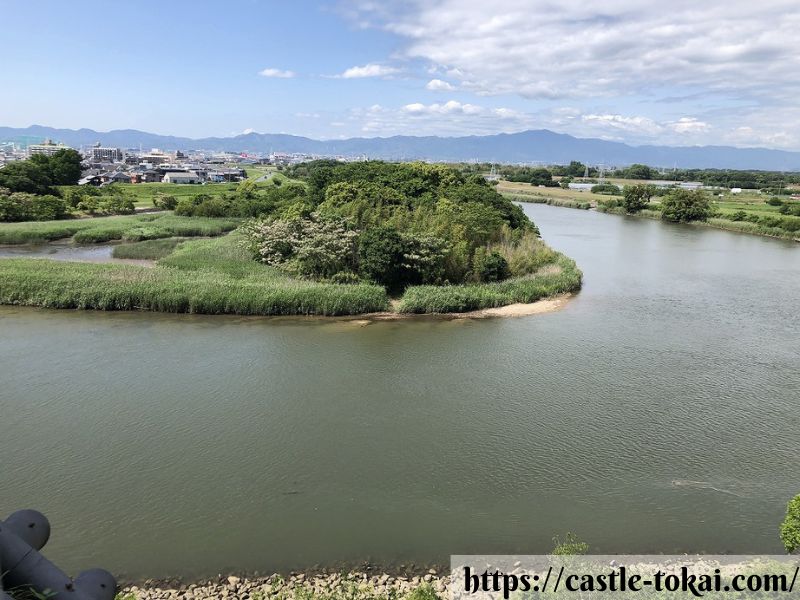

Yoshida Castle is located where the Toyogawa River meanders and the Asakura River flows into it. The kurogane tower must have been clearly visible to boats travelling down the river.
Despite its location by the river, the moat of Yoshida Castle is not connected to the Toyokgwa River.
It is thought that this was because the Toyokawa is a raging river and there was a fear that the castle would collapse when the river rose.
Nevertheless, the Toyogawa River was used to transport goods to the castle, and there are remains of a lock for this purpose.



You can catch a lot of kawaebi just below the castle. Tadatsugu Sakai’s “prawn scoop” was originally a shrimp from Yoshida Castle. It’s frustrating because the shrimp scoop has been taken over by the Bon Odori dance in Okazaki.
obi Kuruwa
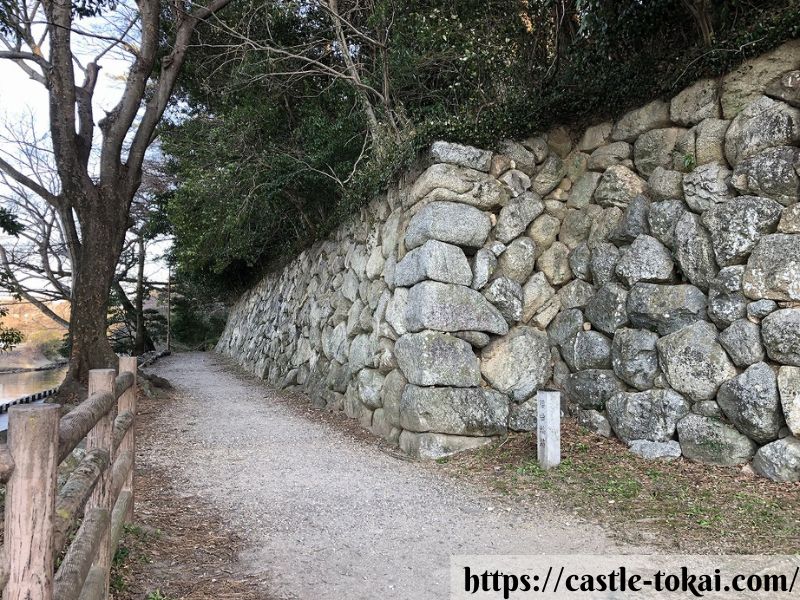

After visiting the Kurogane Tower, it is recommended to go down from the North Gotha Gate to the riverbank and walk along the promenade of the Obi Kuruwa.
In the Edo period, there was no promenade and it faced the Toyogawa River. When the Toyogawa River rises, the promenade is flooded.
A walk along the promenade is a wonderful experience, with the gentle flow of the Toyogawa River and the stone walls of the historic Obi Kuruwa.
The walk takes you to the ruins of the Kawate Tower and the moat, which appears to be connected to the river but is not.



You’ll see lots of people walking their dogs or jogging.
Access to Yoshida Castle
Located at a strategic point on the Tokaido Highway, the castle is easily accessible by public transport or car.
Getting there by public transport
Take a tram from Toyohashi Station and get off at ‘Shiyakusho-mae’ or ‘Toyohashi Koen-mae’.



As a former resident, you should definitely try the tram!
By car
The National Highway 1 runs nearby, so it’s easy to get there by car! Note that there is often traffic congestion (although this has eased considerably recently thanks to the construction of the Route 23 bypass).
Parking in Toyohashi Park is free!
Parking is also available at City Hall and the Art Museum, but there is a charge.
However, users of the museum and city hall can park for up to three hours free of charge.

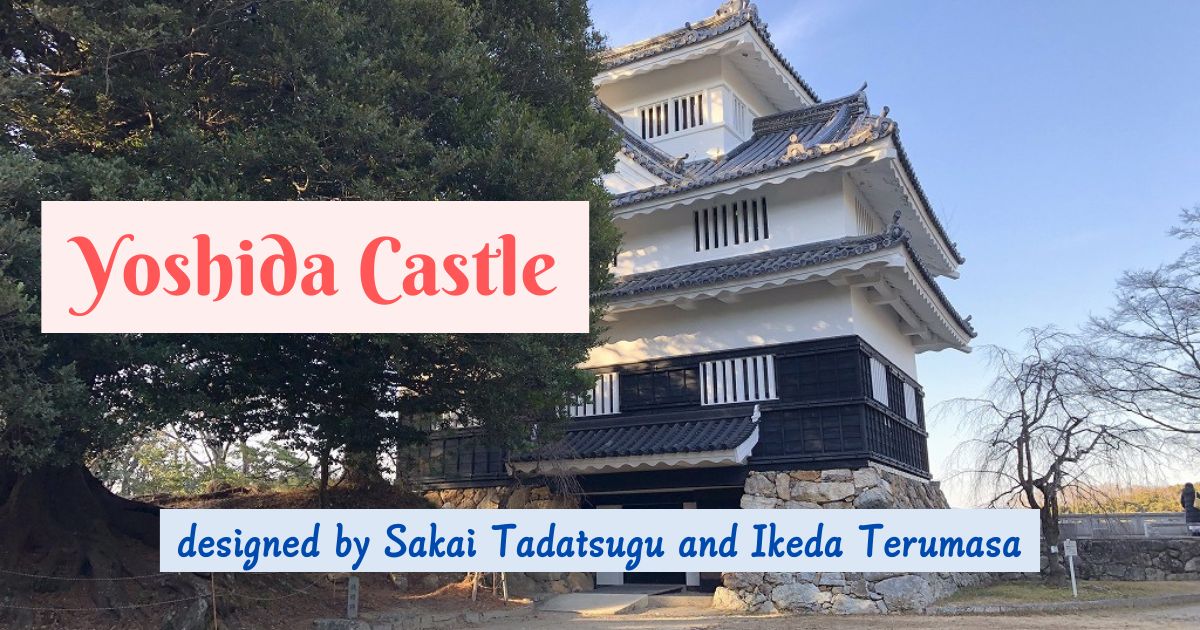

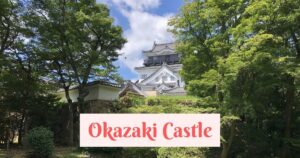
Comments